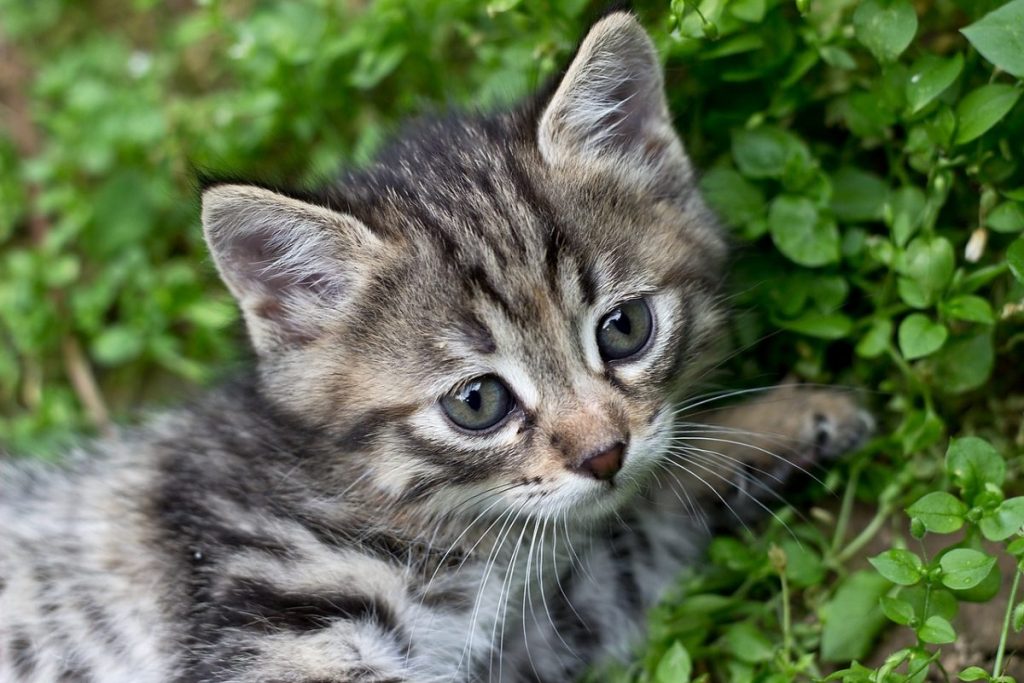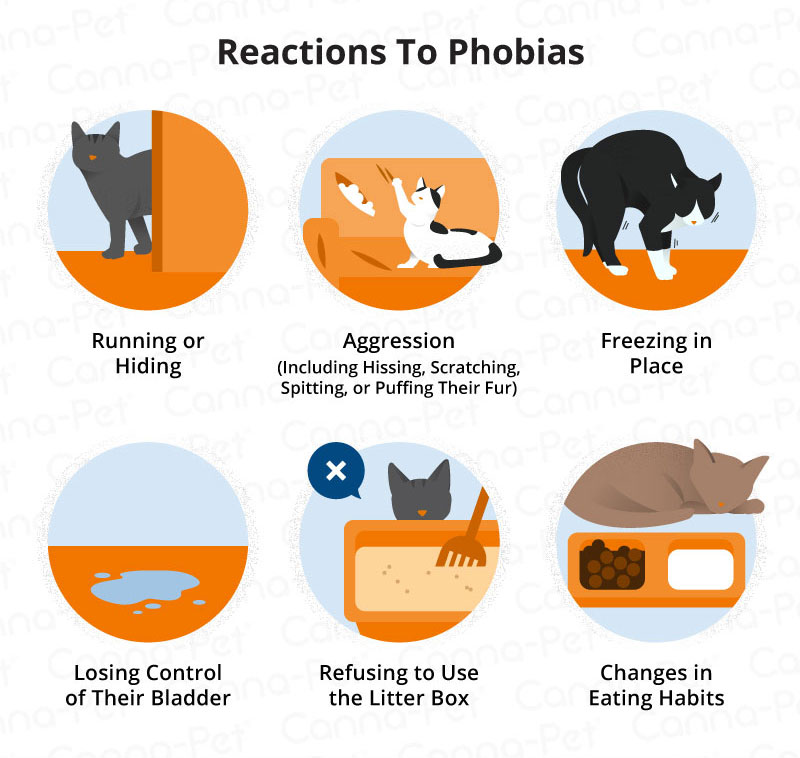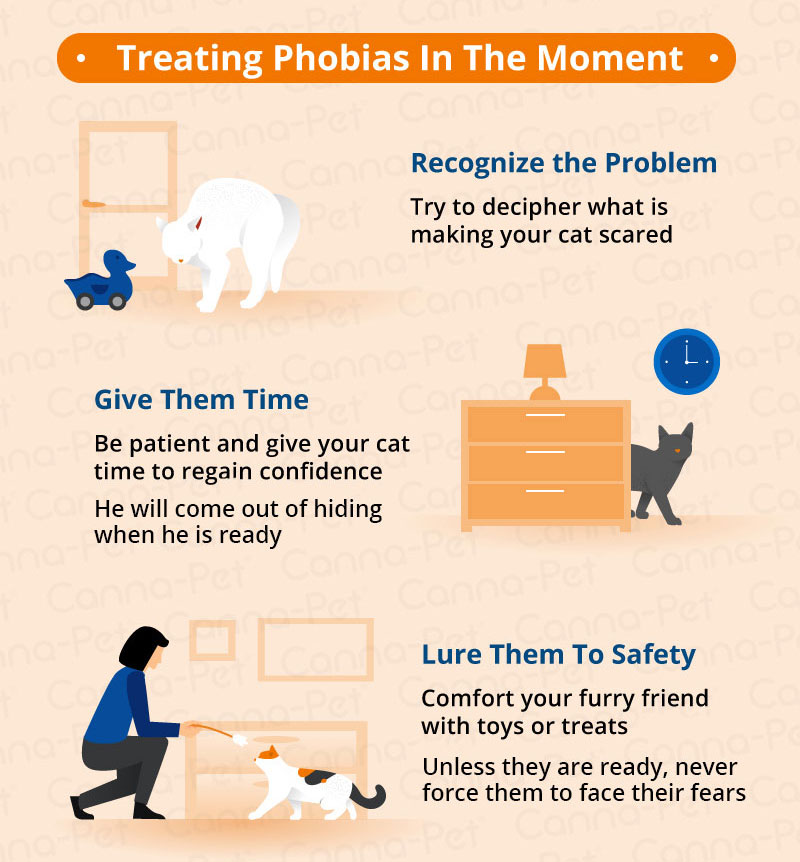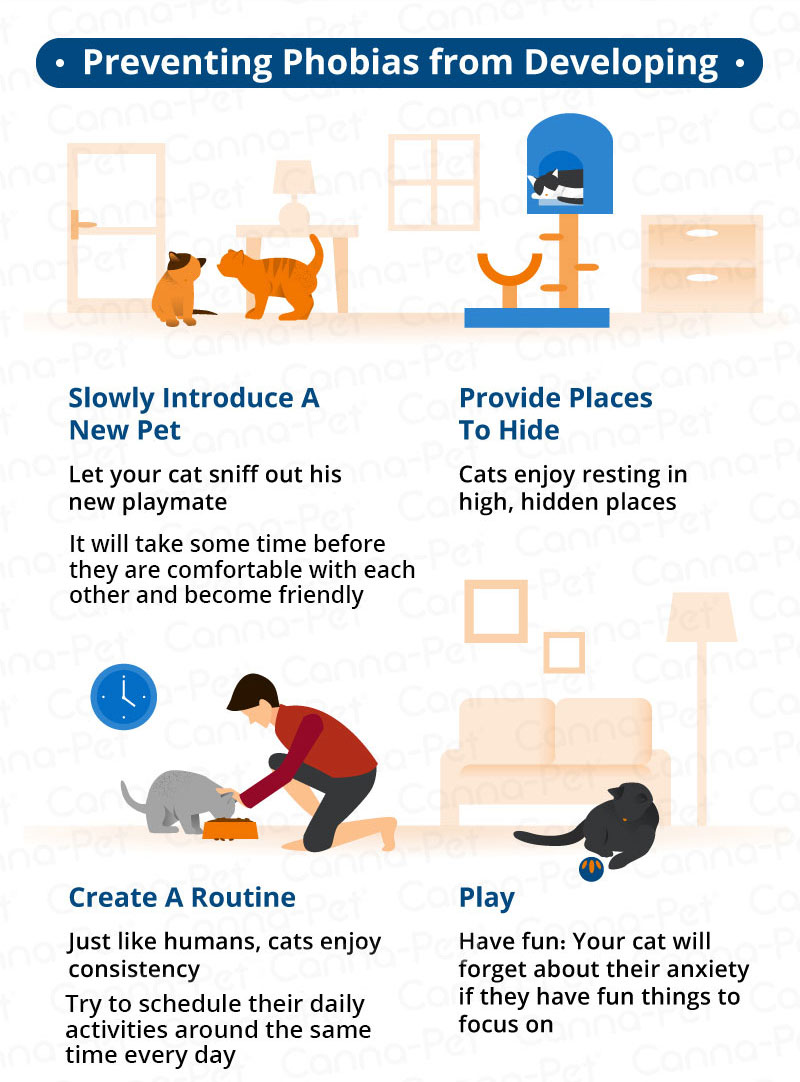Fear is an instinctual feeling in humans and cats alike. While they might not be scared of the same things that humans are (getting fired, losing a loved one, clowns), they have their own unique fears and anxieties. Every cat will behave differently when faced with a fear, and it’s important for pet owners to know if their cat is scared, what they are afraid of, and how they can help.
Understanding Your Cat’s Ancestors
Before diving into what cats are scared of in today’s world, it’s important to look back at what made cats the way they are today and why their behavior manifests itself like it does.
Cats are descendants of larger wild cats such as lions, tigers, and leopards. These cats are thought of as the “kings of the jungle” because they are rarely prey and usually a predator. This is why your kitty likes to hunt, jump, stalk, and bite their toys or other cats.
However, other ancestors such as small cats and early domesticated cats, were the hunted rather than the hunters. As a result, cats also have a prey-like instinct, where they are motivated by protecting themselves and their families. Throw in the fact that most cats are solitary animals and like to be left alone the majority of the time and you have a kitty that loves to hide, then bounce around from corners and hunt.
This paradox is rare in nature, and cats are some of the few animals that possess both hunter and prey behavior. This is also one reason why your cat might go from aggressive to passive in a short amount of time. Some scientists even argue that, although they rely on humans for basic care, cats aren’t even domesticated at all!
All this is to say that it is normal for cats to be scared once in awhile of things that they instinctively feel are threatening their environment. But when this behavior goes from occasional to habitual, or it manifests itself in unnatural ways, it’s crucial to understand what this means.
Common Cat Phobias
Every cat will be different, but there are some common triggers that may set off your feline friend. These may be:
- A loud noise or quick movement – Many cat owners find their furry friends getting scared of things like fireworks, the vacuum, or booming voices. These loud noises trigger their instinctual need to protect themselves.
- A strange environment – Whether you are moving, changing schedules, or introducing a new animal, a change in your cat’s environment can make them scared of their surroundings. Cats are creatures of habit, so when something is amiss they put their guards up.
- A stressful event – Very few cats enjoy going to the vet, getting groomed, or being put in the carrier, which is why events like these can turn into phobias. After events like these, cats can exhibit signs of fear for hours, or even days, after the event.
In addition to these triggers, there may also be some deep-rooted reasons for your cat’s fears. For example, kittens that aren’t socialized enough when they are young may grow up to be more fearful than kittens that had adequate socialization. Also, if a cat was abused or lived in an unhealthy environment, they may become fearful of behavior that reminds them of that time. These kinds of past experiences can also lead to chronic anxiety in cats.
These are just a few of the reasons why your cat may be scared. However, before you can understand the underlying reason of their fear, it is important to understand what that fear looks like.
What Fearful Behavior Looks Like in Cats
Fear will manifest itself in different ways for each cat and each situation, but there are a few universal things that pet owners and vets look for in a fearful feline. Some common signs of fear in cats include:
- Running or hiding
- Aggression, including hissing, scratching, spitting, or puffing up their fur
- Freezing in place
- Going to the bathroom in places other than the litterbox, or losing control of bowels or bladders
- Refusing to use the litterbox
- Changes in eating habits
If you have just been through a stressful event with your cat, like moving, taking them to the vet, introducing a new pet, or changing schedules, the above behavior may be normal for a short period of time. But if this behavior extends for a longer amount of time, or makes your cat violent around other humans or animals, you will likely need to see your vet. Chronic fear, or anxiety, in cats is unhealthy and can lead to other health issues in the future.
You may also want to look for physical signs of fear on your cat in addition to the actions listed earlier. For example, if your cat’s eyes are wide and their ears are back, chances are they are scared of something in their environment. Also, if they are losing hair at a faster rate or have gained or lost a significant amount of weight in a short period, they might be living in fear.
How to Help a Scared Cat
As a pet owner, you do everything you can to help your furry friend. You buy them the best food, you spend time with them, and of course, you show off pictures to anyone that will look. But how is your cat really feeling? It may be easy to brush off signs of fear as their normal behavior, but it’s important to recognize the signs of a fearful cat and help them along, both in the short and long-term.
Cat Phobia Treatment
Depending on what is scaring your cat, there are a few things you can do right now to put them more at ease.
- Recognize the problem. Thinking of the scenarios mentioned before, try to decipher what is making your cat scared. Did you have guests stay over for the weekend that might have caught your cat off guard? Did you vacuum the house and now they are cowering under the bed? By recognizing the problem, you can work to stop the behavior that is scaring your cat.
- Give them time. One of the worst things you can do for a scared cat is force them to face their fears or drag them out of their comfort place. It’s likely that your cat will bounce back and regain their confidence, but be patient and let them come out on their own.
- Lure them to safety. You should never force your cat to face a scary situation, but you can try to comfort them with some of their favorite toys, treats, or smells. If you scatter treats around the floor, chances are a hungry cat will come out to investigate!
These are just a few things you can do right away to help a scared cat. However, it is important that you develop long-term strategies in order to ensure that your cat is less fearful and able to deal with their phobias in a healthy way in the future.
Treating Your Cat’s Fear in the Future
Before even adopting a cat, consider the responsibilities and what obligations you will face as a pet owner. Even though cats are more independent than other pets, it’s still important to understand how you can help them thrive in your home.
If you already have a cat, you probably know how important it is to create a safe, happy, and healthy environment for them. By doing some minor tweaks in your home, you can help quell any fear your cat might have about their environment and encourage adequate development.
- When introducing a new pet, take it slow – One of the most stressful situations is introducing a new cat or other animal to your home. Your resident cat can get territorial, scared, or aggressive. To avoid this fear, introduce them slowly and patiently. Most animal behaviorists suggest putting the new kitty in their own room to get used to it, and letting the cats bat at each other through a door. After about a week, introduce them slowly during short periods of play. With dedicated time and attention, both cats will adapt more comfortably.
- Provide places to hide – Even if a cat isn’t scared, they still enjoy having little nooks and crannies to hide in. Cats are both climbers and dwellers, which is why they enjoy having cat towers to climb on, and beds to hide in. By providing different levels, your cat (especially ones who live indoors) will have more places to explore.
- Create a routine – Cats thrive when they have consistency in their lives, which includes feeding them at the same time every day, feeding them the same amount of food, and making sure they have fresh water and a clean litterbox at all times. Any change in routine, including changing work schedules or a vacation, can set a cat off track.
- Play – This may be one of the most fun parts of having a cat around the house, but also one of the jobs that pet owners tend to neglect! Although cats aren’t as active as dogs, they still require adequate exercise. Plentiful exercise has many benefits, such as better sleep, better overall health, and less destructive behavior.
These are all tips that you can implement now and that will help your cat live happily for the long-term. By understanding their behavior, making a cat-friendly environment, and learning more about pet ownership, you and your feline friend will be bonded in no time.
Cat Phobias: A Brief Summary
- The history of cats and what makes them act the way that they do – Because cats share evolutionary traits with both predators and prey, they act both submissive and aggressive at different times. With the rise of domesticated cats came the evolution of different behaviors as well, such as being scared of household items.
- Common cat phobias – Each cat will be different, but some common causes of fear in cats include loud noises, changes in their environment, and stressful events such as going to the vet or introducing a new cat into your home.
- What fearful behavior looks like in cats – If your kitty is acting up, it could be that they are scared of something in their environment. Cats show their fear by aggressive behavior, hiding, and occasional bathroom accidents.
- How to help a scared cat right away – If your cat is scared, you are probably wondering what you can do right away to help them, and we explained that by being patient you can lure your cat to safety. You should never force your cat to face their fear, but instead give them time to open up.
- How to help a scared cat in the future – By creating a safe space for your cat, you can help them feel more comfortable and less scared on a daily basis. Give your cat lots of places to hide, play with them every day, and introduce changes in their environment slowly and thoughtfully.
Just like in humans, fear is a natural response in situations where a cat feels threatened. This could include loud noises or anything disruptive in their environment. But it is crucial to understand what fear in cats looks like, what causes it, and how you can help your cat if they are scared. As always, consult with your vet if you think your cat has chronic anxiety or if they are scared in mundane situations.












